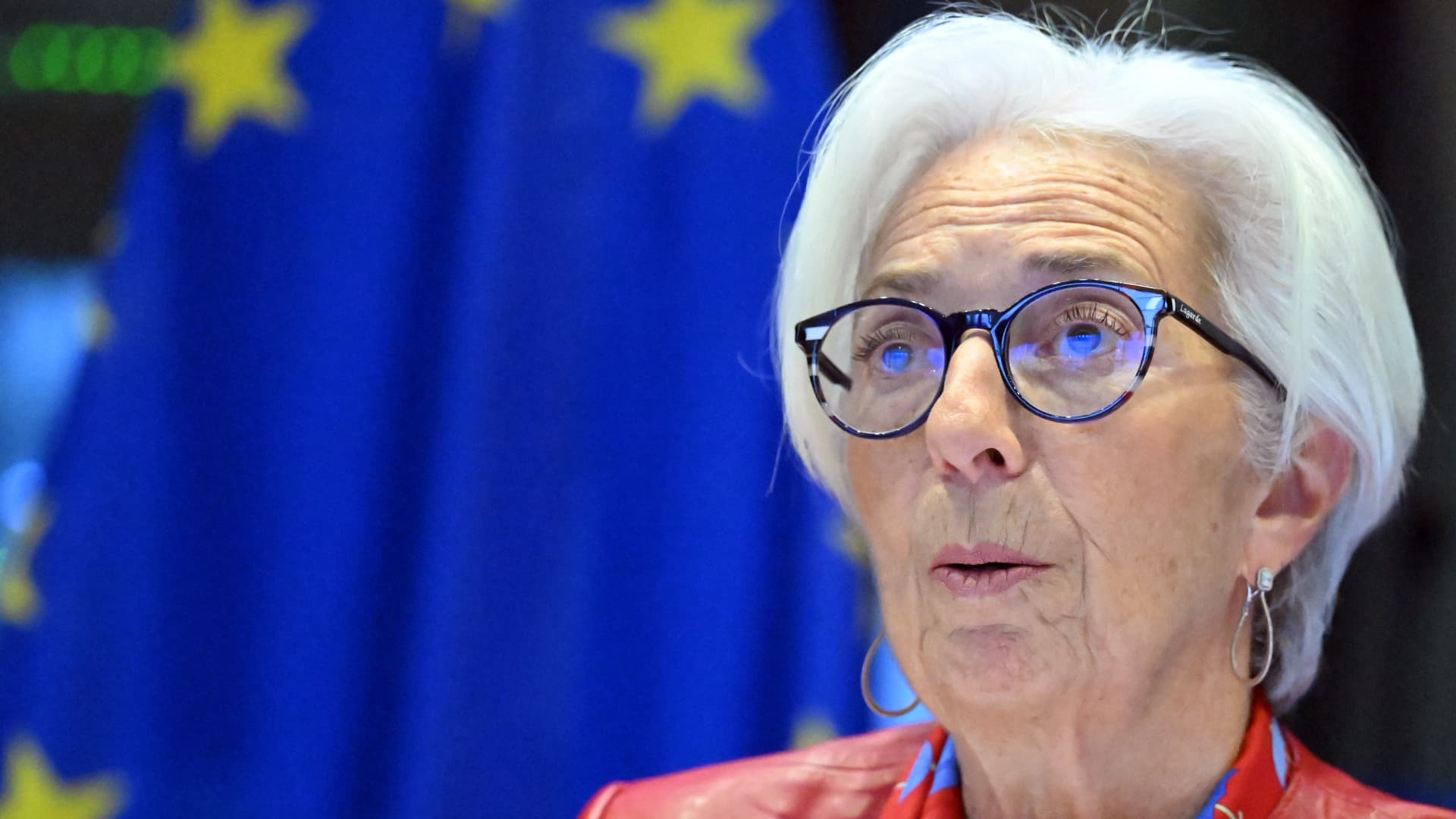The European Central Bank on Thursday held interest rates steady for the second meeting in a row, as it revised its growth forecasts lower and announced plans to speed up the shrinking of its balance sheet.
The bank was widely expected to leave policy unchanged in light of the sharp fall in euro zone inflation, as investors instead chase signals on when the first rate cut may come and assess the ECB’s plans to shrink its balance sheet.
“The Governing Council’s future decisions will ensure that its policy rates will be set at sufficiently restrictive levels for as long as necessary,” it said in a statement. However, the ECB switched language around inflation from describing it as “expected to remain too high for too long,” saying instead that it will “decline gradually over the course of next year.”
The latest staff macroeconomic projections see average real GDP expanding 0.6% in 2023, from a prior forecast of 0.7%. They estimate GDP will expand by 0.8% in 2024, from 1%, previously. The forecast for 2025 was unchanged, at 1.5%.
Headline inflation is meanwhile seen averaging 5.4% in 2023, 2.7% in 2024 and 2.1% in 2025. It had previously forecast readings of 5.6% this year, 3.2% in 2024 and 2.1% in 2025. The ECB now also released a new estimate for 2026, at 1.9%.
The ECB cautioned that domestic price pressures remain elevated, primarily because of growth in the cost of labor. Members see core inflation, excluding energy and food, averaging 5% this year and 2.7% in 2024, 2.3% in 2025, and 2.1% in 2026.
It said that tighter financing conditions were dampening demand and helping control inflation, adding that growth would be subdued in the short term before recovering due to the rise in real incomes and improved foreign demand.
The decision keeps the central bank’s key rate at a record high of 4%.
The ECB also announced that reinvestments under its pandemic emergency purchase programme (PEPP), a temporary asset purchase scheme, would complete at the end of 2024.
The transition will be gradual, with a reduction in the PEPP portfolio by 7.5 billion euros ($8.19 billion) per month on average over the second half of 2024, it said, after the Governing Council agreed to “advance the normalisation of the Eurosystem’s balance sheet.” It means all the tools the central bank uses to determine monetary policy are now in tightening mode, after it stopped reinvestments this summer under its Asset Purchase Program, a bond-buying stimulus package started in mid-2014 to tackle low inflation.
“I think most people thought [the announcement on PEPP] would come a little bit later, might come in the rate cut debate and was the sort of price that the doves would have to pay,” James Smith, developed market economist at ING, told CNBC’s Joumanna Bercetche after the announcement.
Fall in inflation
Euro zone year-on-year inflation has moderated from 10.6% in October 2022 to 2.4% in the most recent reading in November. That has put the ECB’s 2% target within grasp, even as officials note the threat that wage pressures and energy market volatility will cause a potential resurgence.
It has also fueled bets on cuts next year, with some analysts and market pricing both suggesting trims could come before the summer.
Asked about the timing of cuts at a news conference following the announcement, ECB President Christine Lagarde told CNBC’s Annette Weisbach that the central bank was “data dependent, not time dependent.”
“Clearly when we look at our inflation outlook, look at the projections, we see inflation at 2.1% in 2025 … and the path to get there is flatter than it was before, which lowers the risk of inflation expectations deanchoring,” Lagarde said.
“A lot of indicators are showing that underlying inflation comes below expectations, with a decline across all components.”
She continued, “So, should we lower our guard? We ask ourselves that question. No, we should absolutely not lower our guard.”
A major reason for that is the continued risk from domestic inflation, Lagarde said, adding that there is a need to assess fresh wage data in the spring.
Market reaction
European exchanges gained ground through Thursday, with the regional Stoxx 600 index reaching its highest level since January 2022, while European bonds rallied.
After the ECB news, the euro extended gains to trade 0.8% higher against the dollar at $1.095. It also moved from a slight loss to trade flat against the British pound.
The moves partly reflected the U.S. Federal Reserve’s Wednesday decision to hold rates steady and release the latest “dot plot” rate trajectory from its members, triggering expectations of a dovish pivot from major central banks.
Gains held after the Bank of England also announced a rate hold at midday U.K. time, even as its committee said monetary policy was ”likely to need to be restrictive for an extended period of time.”
